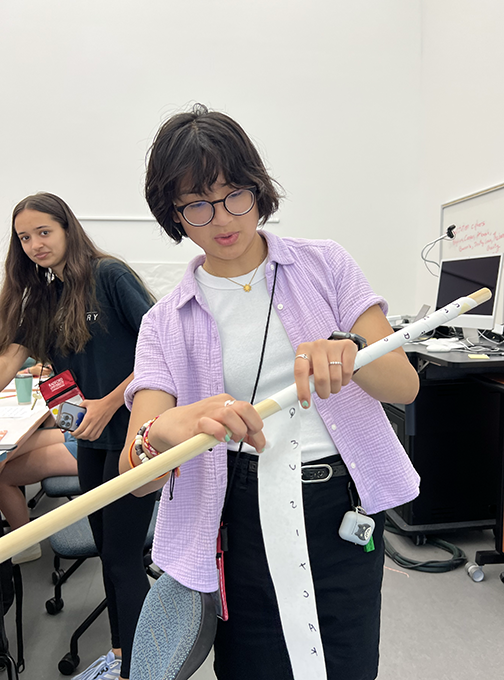Who says history can’t be fun? Exploring communications technologies — writing, printing, signal flags, the telegraph, radio foley and comedy cinema — is the exciting goal of the media history learning experience.
This experience was pioneered in a 2023 Virginia Governor’s School month-long student residency and later in classes at Radford University. Teachers at all levels are encouraged to try some of these techniques to further appreciation of media in history.
Our hands-on tours have taken us through experiences like writing with goose quills on parchment; setting type by hand; sending messages via Navy semaphore and Army “wig-wag” flag signals; learning Morse code; playing the “Nellie Bly” game; creating a radio play with foley sound effects; and produced a short comedy film.
The things that most engage students seem to be writing and producing a radio drama or silent comedy video. Two surprising responses from students have involved the intrigue of cryptography and the ease of using goose quills for calligraphy.
In the following sections, we’ll explore the teaching setup, the materials and costs, and the fun and surprises.
- Writing — We started by studying and trying the three earliest flexible writing technologies: Egyptian hieroglyphics, Chinese calligraphy, and European goose quills on parchment.
- Printing –– We set type by hand and printed our names with the help of Sarah Piper Yates Pollock of Sourced Press. The small portable Kelsey press was a great time-saver.
- The Nelly Bly game — Follow a round-the-world race with pioneering journalist Nellie Bly in a game created by her editors at the New York World newspaper in 1890. And learn more about Bly and what people knew about the places she visited during the race.
- Signals –– We studied historical cryptography and used techniques such as the ancient Greek “scytale” (pronounced Sky-Tale). We also tried out Morse code, semaphore and other signal systems.
- Radio –– We wrote scripts based on old radio productions and recorded them in the School of Communication podcasting lab. Sound effects (foley) were a special feature of the radio lab.
- Cinema– We learned about the history of photography and film, but had the most fun writing scripts and producing a film ourselves.
Special thanks to Prof. James Robey, Visiting Prof. Katy Shepard, Sarah Piper Yates Pollock of Sourced Press / Springhouse School (Floyd, Va.), and Rob Airaghi, former docent at the Coptic Museum, Cairo.
Added note: The approach we took in this Hands on Media History is an empirical, grass roots experience with the goal of opening history to students. A European school of research, described in a 2020 open source book “Hands On Media History” edited by Nick Hall and John Ellis, pioneered a more theoretical version of this approach by engaging in “the overdue rethinking of the reciprocal relationship between humanity and the technologies it creates.” Despite the agreeably coincidental use of the same label, this American “hands-on history” is not affiliated with the Hall & Ellis work.


